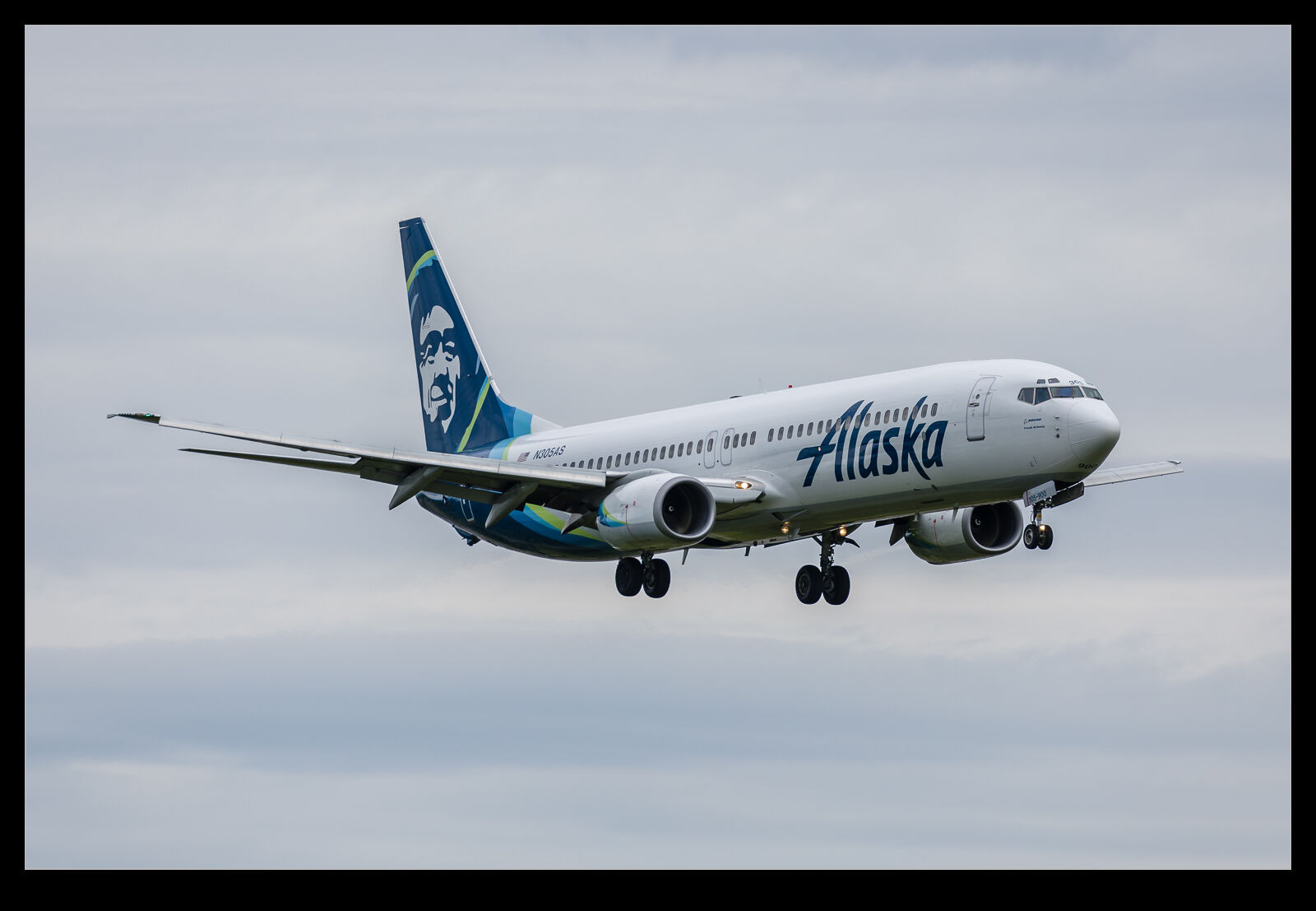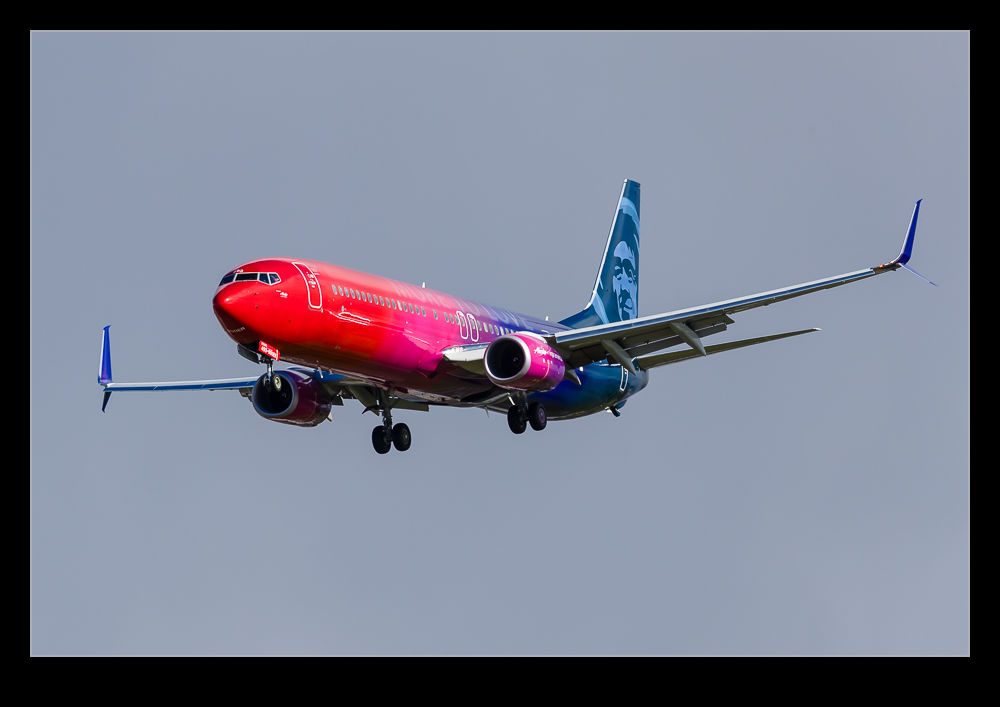 When Boeing launched the 737NG family, the original models were very similar in size to the previous generation of 737s. However, there was pressure for more capacity so they added a new model to the family with the 737-900. A few were sold but it was not a capable enough aircraft and hardly anyone bought any. Instead, Boeing had to redesign the aircraft with some more capacity after redesigning the rear bulkhead and some more range resulting in the 737-900ER. This has sold considerably better. There are still a few -900s around though and Alaska has a few. They are very early jets and they are not worth the investment for adding winglets so they are some of the few NG generation jets to still have wings with the original wingtips. Here is one of them arriving at Paine Field.
When Boeing launched the 737NG family, the original models were very similar in size to the previous generation of 737s. However, there was pressure for more capacity so they added a new model to the family with the 737-900. A few were sold but it was not a capable enough aircraft and hardly anyone bought any. Instead, Boeing had to redesign the aircraft with some more capacity after redesigning the rear bulkhead and some more range resulting in the 737-900ER. This has sold considerably better. There are still a few -900s around though and Alaska has a few. They are very early jets and they are not worth the investment for adding winglets so they are some of the few NG generation jets to still have wings with the original wingtips. Here is one of them arriving at Paine Field.
Tag Archives: 737-900
Trailing Static Cones
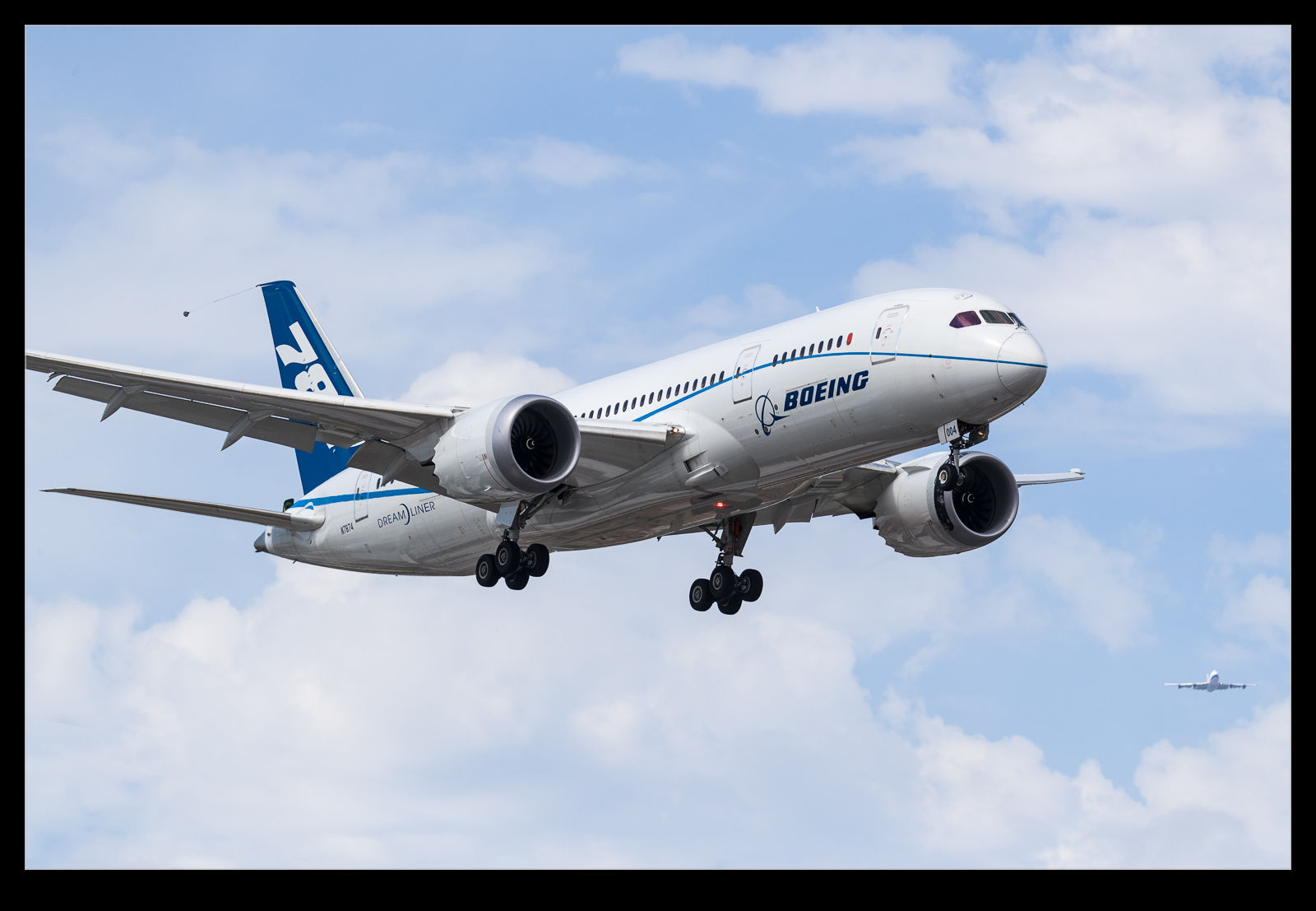 For the people that don’t care for my aviation posts, this one won’t be of interest. For the aviation fans that don’t care about the techie stuff, this will also be of limited interest. That probably leaves a very small group of readers by now (Gary, I am trusting you are still here). This is about a piece of flight test instrumentation that often causes questions when people see it. It is the trailing static cone.
For the people that don’t care for my aviation posts, this one won’t be of interest. For the aviation fans that don’t care about the techie stuff, this will also be of limited interest. That probably leaves a very small group of readers by now (Gary, I am trusting you are still here). This is about a piece of flight test instrumentation that often causes questions when people see it. It is the trailing static cone.
 The aircraft has sensors that measure air data, two of the most important of which are the pitot probe and the static port. The pitot probe measures the dynamic pressure of the air which increases as the speed increases. The static port measures the air around the aircraft. The difference between the two is used to determine the speed of the aircraft and the static is used to determine the altitude. These are both vital information for a pilot. However, the aircraft affects the flow of the air around it so, while you can calculate what the pressures should be, you need to validate what the actual readings are. The first flights are carried out prior to calibrating the system so you need to have a bit of margin in the speeds you use until you have confidence in the readings.
The aircraft has sensors that measure air data, two of the most important of which are the pitot probe and the static port. The pitot probe measures the dynamic pressure of the air which increases as the speed increases. The static port measures the air around the aircraft. The difference between the two is used to determine the speed of the aircraft and the static is used to determine the altitude. These are both vital information for a pilot. However, the aircraft affects the flow of the air around it so, while you can calculate what the pressures should be, you need to validate what the actual readings are. The first flights are carried out prior to calibrating the system so you need to have a bit of margin in the speeds you use until you have confidence in the readings.
 Measuring static pressure is hard to do. The plane will have a static port on the skin of the plane as well as possibly incorporated with the pitot head. However, the air has accelerated to go around the fuselage so it is assumed to have a lower pressure than ambient. Because the plane is disturbing the flow, you need a way to measure the pressure some distance away from the plane. The answer is a trailing static cone.
Measuring static pressure is hard to do. The plane will have a static port on the skin of the plane as well as possibly incorporated with the pitot head. However, the air has accelerated to go around the fuselage so it is assumed to have a lower pressure than ambient. Because the plane is disturbing the flow, you need a way to measure the pressure some distance away from the plane. The answer is a trailing static cone.
 This cone incorporates pressure measurement sensors and it attached to a long cable. This is held on a reel inside the aircraft and fed out of the aircraft at the rear. For airliners, this is usually through a modification to the top of the fin. A comparison between the test aircraft and a production jet will show the different structure. The cable dangles out of the fin and, as the speed increases, the cone pulls the cable taught and streams backwards.
This cone incorporates pressure measurement sensors and it attached to a long cable. This is held on a reel inside the aircraft and fed out of the aircraft at the rear. For airliners, this is usually through a modification to the top of the fin. A comparison between the test aircraft and a production jet will show the different structure. The cable dangles out of the fin and, as the speed increases, the cone pulls the cable taught and streams backwards.
 When the testing is required, the cable is winched out and the cone is a long way behind the aircraft in what is relatively undisturbed airflow. If you go to the Museum of Flight, the prototype 747 is on display and it includes the trailing cone equipment in the fuselage. The reel is shown in its mounting location and the trailing cone is hung inside to allow you to take a look at it.
When the testing is required, the cable is winched out and the cone is a long way behind the aircraft in what is relatively undisturbed airflow. If you go to the Museum of Flight, the prototype 747 is on display and it includes the trailing cone equipment in the fuselage. The reel is shown in its mounting location and the trailing cone is hung inside to allow you to take a look at it.
The Merger Jet (At Last)
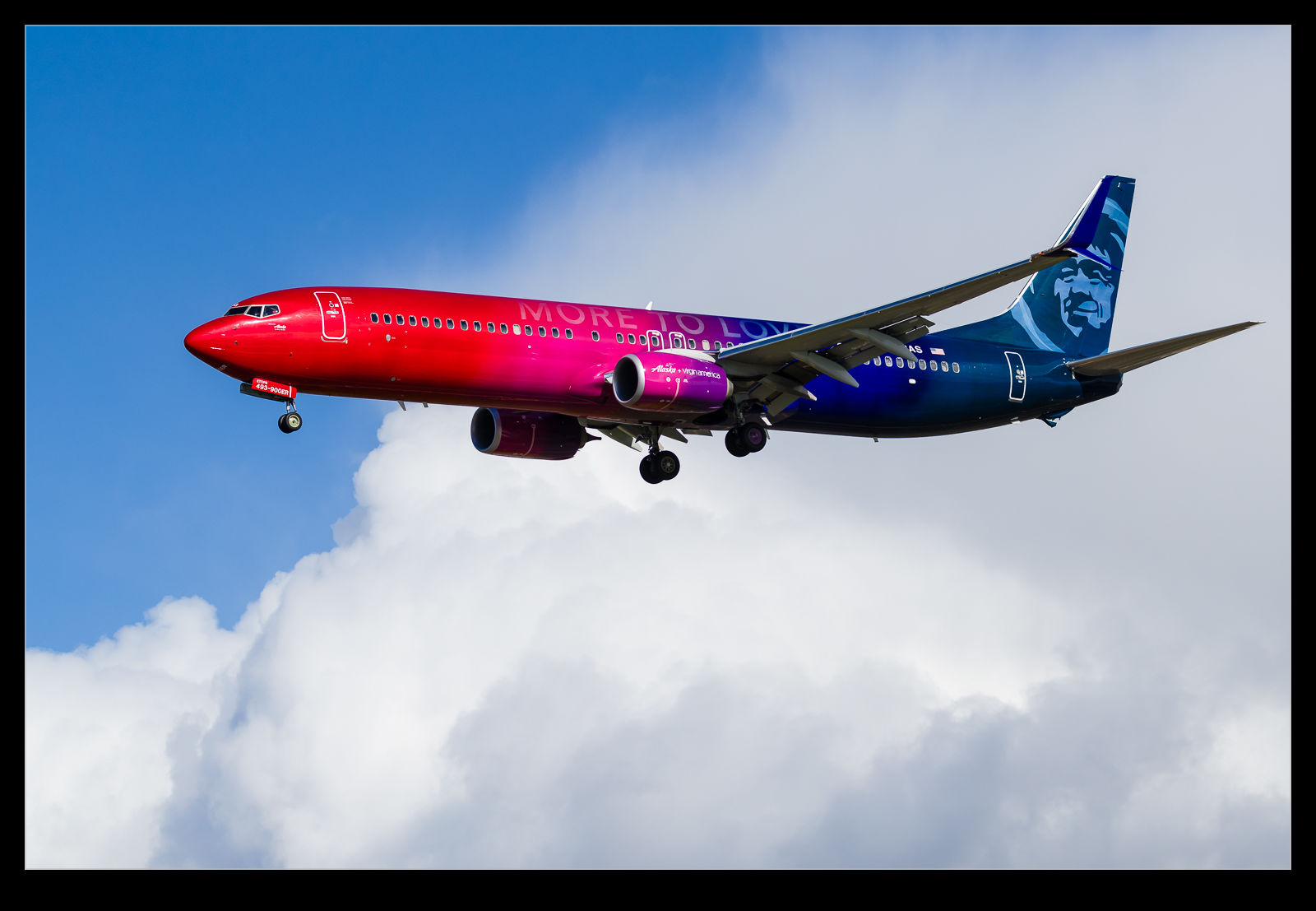 West Coast airline flying includes a lot of Virgin America. Headquartered in Redwood City, just down the peninsula from SFO, Virgin America has been struggling to establish itself as a carrier with a different level of service. It must have done well enough because Alaska got worried enough to buy it. They call it a merger but Alaska bought Virgin. Everyone wonder what will happen next since the fleets are totally dissimilar as is the customer service. Alaska repainted one of their jets in a new livery to celebrate the completion of the acquisition.
West Coast airline flying includes a lot of Virgin America. Headquartered in Redwood City, just down the peninsula from SFO, Virgin America has been struggling to establish itself as a carrier with a different level of service. It must have done well enough because Alaska got worried enough to buy it. They call it a merger but Alaska bought Virgin. Everyone wonder what will happen next since the fleets are totally dissimilar as is the customer service. Alaska repainted one of their jets in a new livery to celebrate the completion of the acquisition.
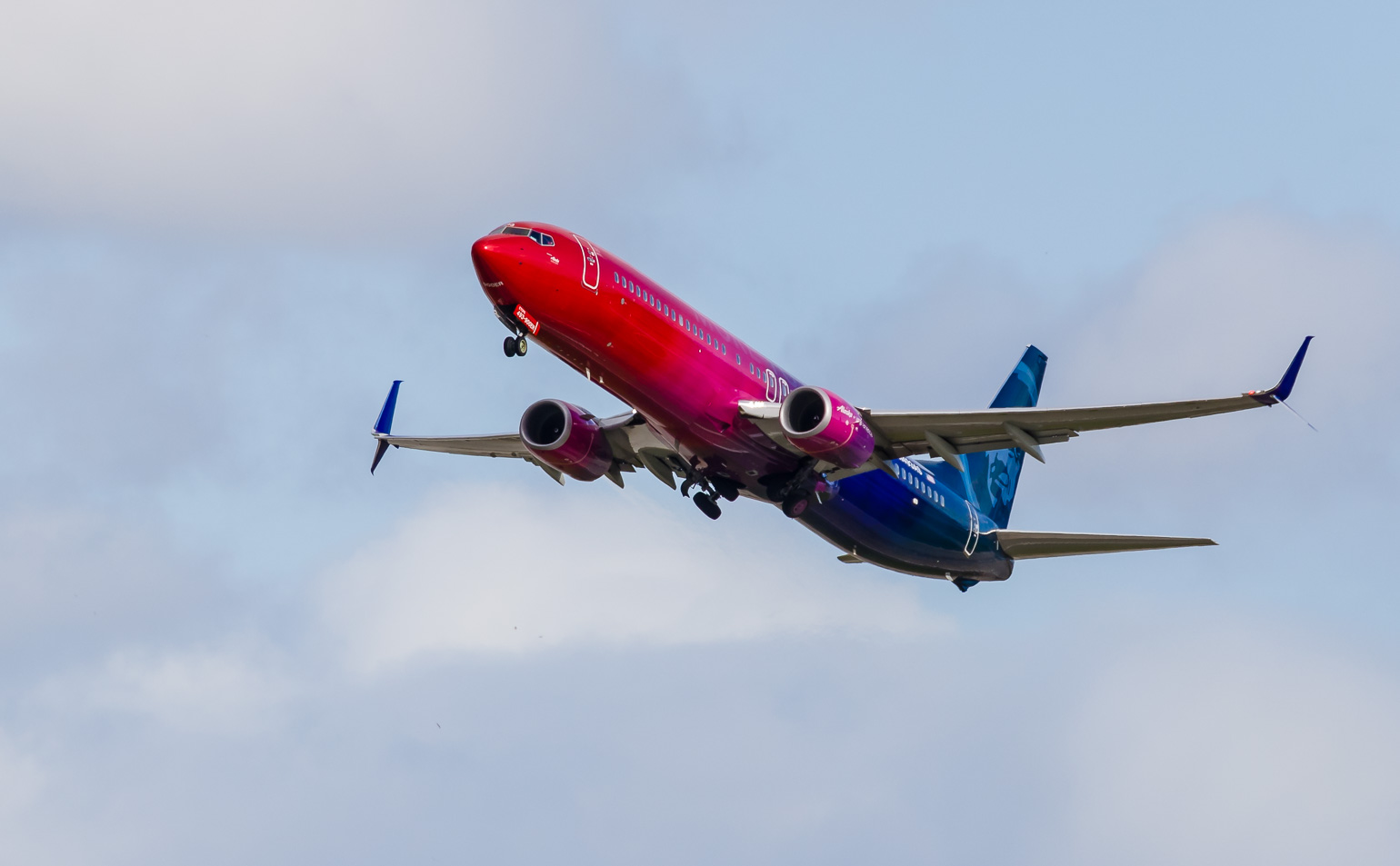 It is one of their 737-900s and the colors migrate from red to blue to symbolize the joining of the two. I have missed the jet on numerous occasions. I thought I was never going to catch it but finally saw it at San Jose. You are a lot closer to the flight path at San Jose which is good. What is even better is being there on the pouring rain when the clouds part five minutes before the jet arrives. Sadly, the weather closed in just as it took off again but the light was okay over the airport, even if it wasn’t where I was. Still, I finally got it!
It is one of their 737-900s and the colors migrate from red to blue to symbolize the joining of the two. I have missed the jet on numerous occasions. I thought I was never going to catch it but finally saw it at San Jose. You are a lot closer to the flight path at San Jose which is good. What is even better is being there on the pouring rain when the clouds part five minutes before the jet arrives. Sadly, the weather closed in just as it took off again but the light was okay over the airport, even if it wasn’t where I was. Still, I finally got it!
What, No Winglets?
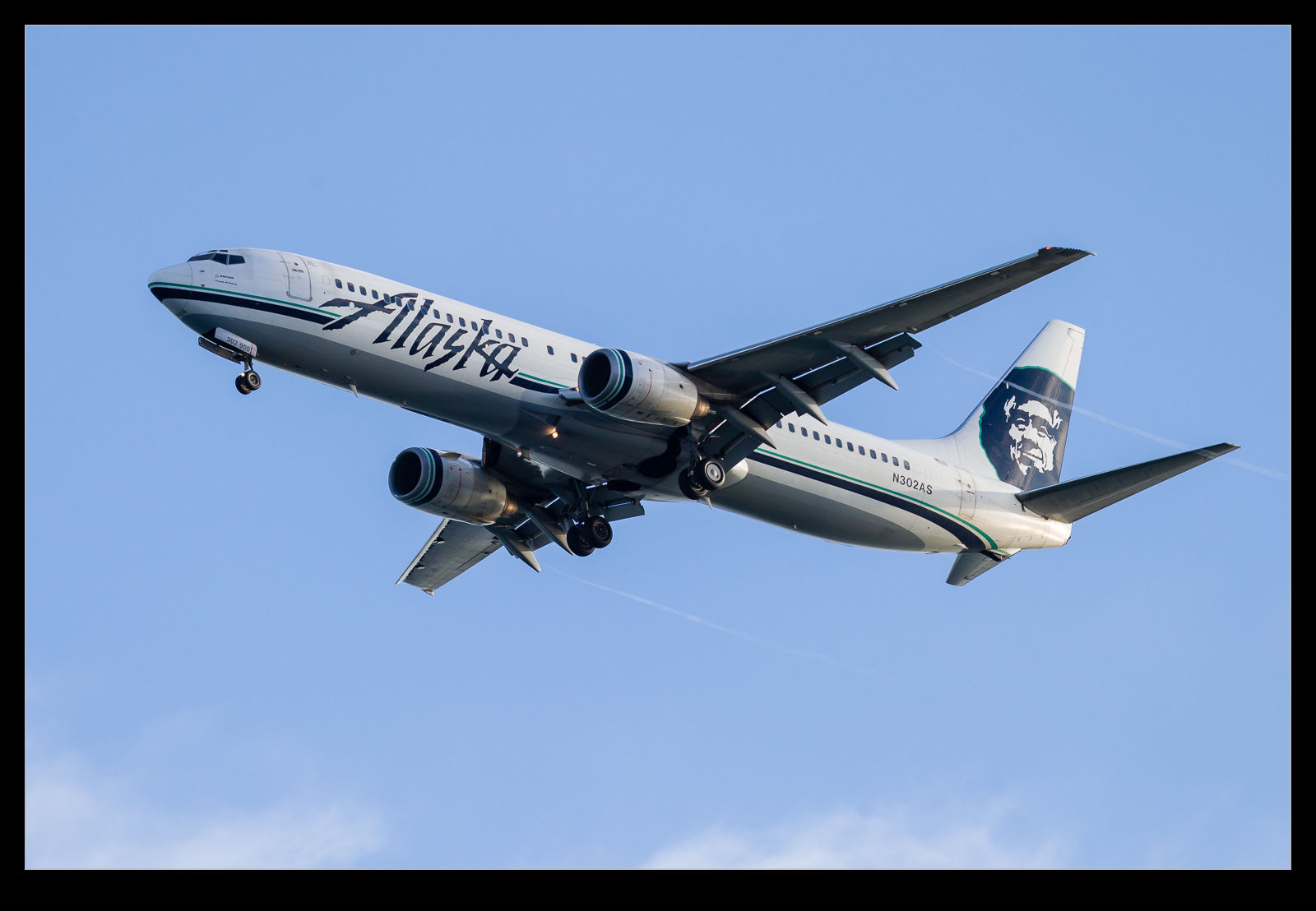 There is not a huge amount of variation in airliners these days so coming across something a little different is usually a moment of interest. While the name Alaska Airlines might suggest an airline focused on Alaska, it is actually headquartered in Seattle and seems to have a wide range of operations all across the west coast. Consequently, we see a lot of them in both Oakland and SFO. They have a large fleet of 737-800s and 737-900ERs and both types have been retrofitted with the APB Scimitar winglets. Apparently, not all of them though. This example I saw coming by Coyote Point and it not only doesn’t have Scimitars, it doesn’t have winglets at all. A rare beast these days.
There is not a huge amount of variation in airliners these days so coming across something a little different is usually a moment of interest. While the name Alaska Airlines might suggest an airline focused on Alaska, it is actually headquartered in Seattle and seems to have a wide range of operations all across the west coast. Consequently, we see a lot of them in both Oakland and SFO. They have a large fleet of 737-800s and 737-900ERs and both types have been retrofitted with the APB Scimitar winglets. Apparently, not all of them though. This example I saw coming by Coyote Point and it not only doesn’t have Scimitars, it doesn’t have winglets at all. A rare beast these days.
